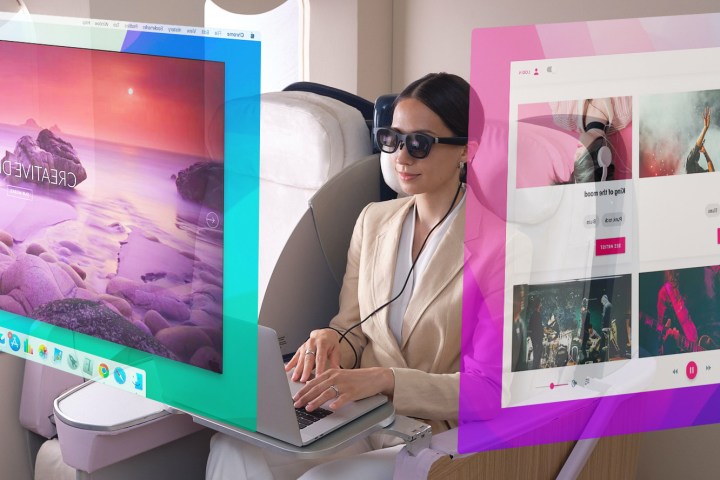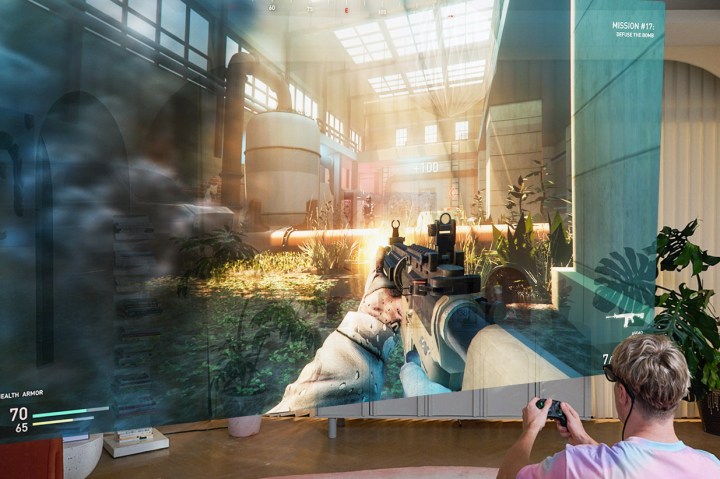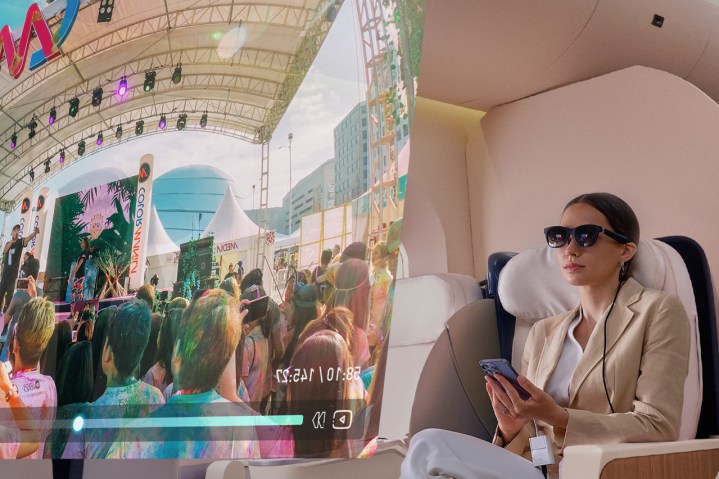Nreal is bringing its augmented reality (AR) glasses to the U.S., and this time the company is porting over all that immersive fun to the iOS ecosystem. The Nreal Air, which have been available in the U.K. since May, carry a price tag of $379 and will be available via Amazon and authorized retail outlets starting today.
The Nreal Air is a watered-down version of the Light AR glasses, but the package is still quite compelling for the asking price. Rocking a more consumer-friendly wayfarer design similar to Facebook’s Ray-Ban Stories, the Nreal Air feature an OLED display offering an effective resolution of 3840 x 1080, the same as the pricier Light version.

The contrast ratio also stays identical at 100,000:1, while the perceived brightness has actually gone up to 400 nits. The display unit offers a 46-degree field of view, and as a neat surprise, Nreal has also added a layer of antireflective coating on top. In the AR mode, users get access to a floating 200-inch screen that is touted to be tailor-made for Xbox Cloud gaming.
When the Air Casting mode is enabled, the Nreal Air deliver a virtual screen measuring130-inches diagonally with a perceived depth of 4 meters. In this mode, users can enjoy streaming video content, play games tethered to their Android phone, and even tap into dedicated gaming consoles like the Xbox, PlayStation, Steam Deck, and the Nintendo Switch. In case you’re wondering, Steam access is offered, too.
Break out of the box, and transform your screen. #NrealAir x #iPhone is ready to unlock your iPhone screen.
Subscribe to find out more🔗 https://t.co/IX0eTTtTIW#Nreal#iPhone14#iPhone14Pro#Apple
— Nreal 👓 (@Nreal) September 15, 2022
To pair these glasses with an iPhone, the Chinese company is also introducing the Nreal Adapter, which is essentially an HDMI to Lightning dongle that will be sold separately for $59 a pop. But there’s a catch. Unlike the Android software ecosystem, which runs natively on the smart glasses’ Nebula OS, the iOS apps are limited to screen mirroring.
While that might sound a tad disappointing, it’s still good enough to watch videos on the likes of Netflix and Instagram. Over on the Mac side of things, Nebula is finally available for MacBooks, as well, but only for the versions with Apple’s M-series processors inside.

Launching Nebula on a Mac brings forth the AR Desktop UI, which is basically a bunch of virtual desktop screens separated across multiple active floating windows. In a nutshell, this is as close as you can get to Tony Stark-like workflow with his Jarvis AI on a $379 budget.
Nreal is touting 5 hours of battery life for continuous video streaming via the Air Casting feature, double that of the $599 Nreal Light AR glasses. Of course, a few sacrifices have been made. The spatial movement has been reduced to 3 degrees of freedom (DOF), down from the Light’s 6 DOF, and you don’t get a front-facing camera or specialized computer vision cameras on the Air.

But a few other improvements are part of the package this time. The Nreal Air glasses are 25% lighter and consume 50% less power. Nreal claims that the Air smart glasses are the only XR product in the segment to have been granted TUV Rheinland’s Blue Light Blocking, Flicker Free, and Eye Comfort certifications.
The redesigned AR Space brings the aesthetics of a curved screen, complete with a new widget feature for quickly accessing apps. The in-house Spatial Browser adds a new vertical browsing mode that is suited for social media feeds like those on TikTok.
Editors' Recommendations
- Nomad’s new iPhone case and Apple Watch band may be its coolest yet
- iPhone 16: news, rumored price, release date, and more
- iPhone SE 4: news, rumored price, release date, and more
- Here’s how Apple could change your iPhone forever
- There’s a big problem with the iPhone’s Photos app




